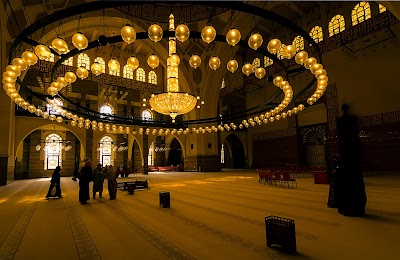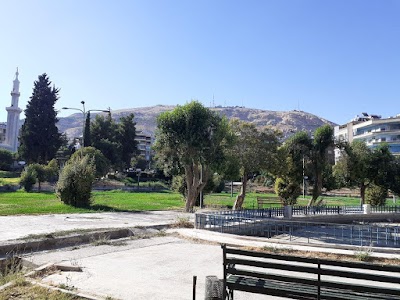Al-Fateh Mosque (مسجد الفاتح)
Related Places
Overview
Al-Fateh Mosque, located in the vibrant Sirte District of Libya, is an extraordinary confluence of spirituality, culture, and history. As a leading spiritual center, it presents foreign tourists with more than just a place of worship; it serves as a doorway to explore Libya's rich Islamic heritage and communal traditions.
Constructed during Muammar Gaddafi's regime and completed in the early 1980s, Al-Fateh Mosque is one of Sirte's most striking architectural marvels. The name "Al-Fateh," meaning "The Conqueror," resonates with Libya's historical and political narratives from that period, making the mosque a symbol of the region's architectural brilliance.
Upon entering, visitors are greeted by an expansive courtyard that sets the stage for the mosque’s breathtaking interior. This courtyard is not only a space for ablution and meditation but also a vibrant gathering spot during religious festivals. The design reflects the beauty of Islamic art, featuring intricate geometric patterns and exquisite Arabic calligraphy. Each arch, dome, and minaret showcases the ingenuity and rich artistic traditions of Islamic architecture.
Inside, the main prayer hall offers a serene atmosphere adorned with beautifully woven carpets, grand chandeliers, and intricately designed mihrabs, which indicate the direction of Mecca. The hall exudes peace, often filled with the soothing recitations of the Quran. Non-Muslim visitors are welcome to enter, but it is expected that they dress modestly and adhere to the mosque’s etiquette.
One impressive aspect of Al-Fateh Mosque is its remarkable capacity to accommodate thousands of worshippers at once. This feature is especially significant during the holy month of Ramadan and the annual Eid celebrations, when the mosque transforms into a vibrant hub of religious activity and community engagement. Visitors during these times can witness the dynamism of communal prayers and partake in elaborate traditional Libyan festivities that follow.
For those keen on cultural and educational experiences, Al-Fateh Mosque also houses a library with a substantial collection of Islamic texts and manuscripts. This library serves as a valuable resource for scholars and students and offers tourists a deeper understanding of Islamic theology and jurisprudence. Guided tours often include a visit to this library, enriching the overall experience.
Surrounding the mosque are meticulously maintained gardens, providing a tranquil retreat for visitors to relax and reflect. These gardens showcase a variety of local flora and offer a peaceful environment to appreciate the beauty of nature, highlighting the harmonious coexistence of faith and the environment.
The mosque's strategic location in Sirte also opens up opportunities to explore the broader district, rich in history where ancient civilizations once flourished. Visitors can easily combine their trip to Al-Fateh Mosque with explorations of nearby archaeological sites, gaining a holistic perspective on the historical depth of the area.
In recent years, the mosque has undergone several renovations to preserve its structural integrity and aesthetic appeal. These updates ensure that Al-Fateh Mosque remains a lasting emblem of Libya’s Islamic heritage while catering to the needs of modern worshippers and visitors alike.
In summary, Al-Fateh Mosque is more than just a religious landmark; it is a cultural bastion that offers profound insights into Libya’s spiritual and communal life. For foreign tourists, a visit to this mosque is an enriching experience that transcends mere sightseeing. It provides an opportunity to engage with local culture, appreciate architectural splendor, and gain a deeper understanding of the Islamic faith as practiced in Libya. As you plan your trip to Sirte, be sure to allocate time to explore this beautiful and significant testament to Libya’s spiritual legacy.





